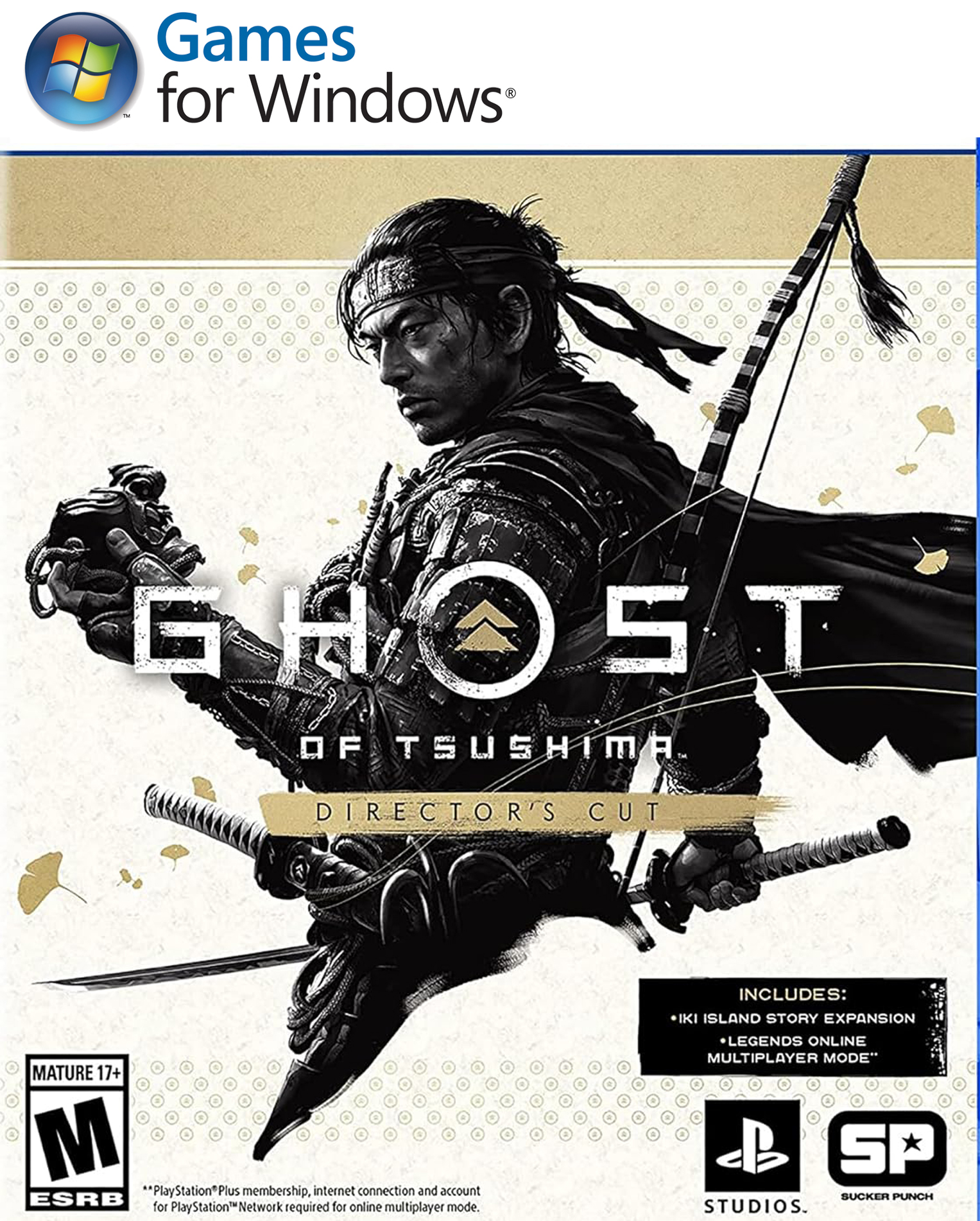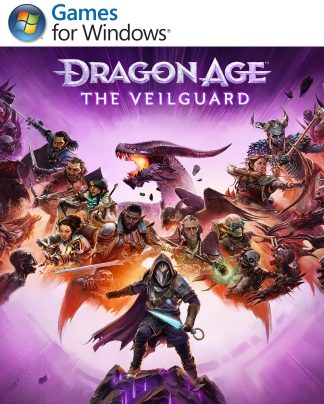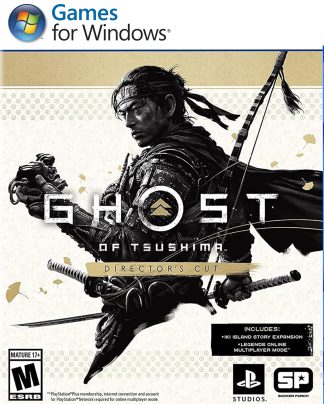Ghost of Tsushima: Director’s Cut (PC) – Steam – Global
€59,99 Original price was: €59,99.€29,50Current price is: €29,50.
The silence falls as you hold your breath the second before you are executed. Everything freezes in that sticky moment. The wind halts. In the beat between honor and life, Jin Sakai dances with his ghosts. Listening to this narrative shaped in steel and blood evokes reveries of a stunningly enchanting and eternally reminiscent sacrifice scribed onto a game known as Ghost of Tsushima Director’s Cut.
Product description
Capturing the Essence of Tsushima’s Landscape and Jin’s Emotional Journey After Battle
To Sucker Punch, Tsushima was more than just a piece of land. They tried to encapsulate the feel of Tsushima and did so beautifully. From the golden sunlight streaming through the bamboo groves to the storm clouds hovering over Izahara’s shores like a brooding storm, every shot seems to be plucked from some inked scroll. The Iki Island part of the Director’s Cut also adds stunning scenery alongside this water, which angry and foggy defeat has amassed over time. When the last foe drops, Jin, with a soft click of katana sheathing, loses the feeling of victory but rather the numbing sensation of having lost something invaluable.
Immersive 13th Century Japan in Ghost of Tsushima Director’s Cut: Honor, Sacrifice, and PC Enhancements
Grab your sword and samurai armor and become a part of the tale. Tsushima awaits you. Considering the gruesome beauty of 13th-century Japan, Ghost of Tsushima Director’s Cut is arguably one of the best stories ever told and builds on Prince of Tsushima’s legacy as it allows you to play on the PC platform with its upgraded graphics and features. This story is about honor, sacrifice, and a samurai torn between ideals and practicality. The petals and blood blend together to create a magical world that one can only dream of.
Mongol Invasion and the Transformation of Jin Sakai in a Visually Enhanced World on PC
The cinematic conflict is imbued with game rage and takes forever to engulf the senses, making the screen dim. The limitless and brutal horde led by Kublai Khan was born, and this made the Mongol invasion ideal. As a solemn Samurai and the only one left of his clan attested Middle Jin Sakai, you see breathtaking burning villages that turn golden fields into ashen cherry blooms. With the best Director’s Cut access, this whispering world is enhanced through modern technology, making sure to keep drones and ashes away so that each shadow hints at an unseen enemy.
Reconstructed Tsushima: Uncanny Beauty and Stunning Landscapes on PC with Varied Settings
War and loss transform the beginning of a reconstructed Tsushima, a land once full of beauty. With what the PC version is capable of achieving graphically if you have a performant rig and with its variety of settings, the uncanny and merciless charm of this place makes you forget everything while serving cutting-edge stunning landscapes with every gentle wind. Every locality is a gem waiting to be found while the monstrous bamboo forests and the fierce coastlines sculpt the wait.
Ghost of Tsushima: Mastering Swordplay, Martial Arts, and the Samurai Code of Honor
Ghost of Tsushima Director’s Cut is an exceptional game accompanied by a gripping and exciting storyline. It captivates its players by unveiling the life of sired ghost flames and focuses on the idea of a samurai. The focus of the activity lies in achieving mastery over sword dives and paying close attention to martial arts, whose essential elements include honor, respect, protection, and duty. The game starts as one invincible soldier undertakes quests against hundreds of foes.
Realistic Character Portrayals and Intuitive Combat Stances Against Diverse Enemies
The characters’ uniqueness and beauty come only from their ability to feel rather than code. The Director’s Cut optimizes this by making it more realistic to cut through stances to counter a diverse set of enemies. During a battle with enemies, block-striking strikes become heavily intuitive. Only because of the more rudimentary level of the brutes’ martial techniques does this translate into a level of more profound respect for them.
Jin’s Ghost Tools: Practical Warfare and the Internal Conflict Between Samurai and Ghost
Besides the sword, Jin also has ghost tools, showing more practical and often dirty warfare. The kunai, smoke grenades, and archery give you versatility in your encounters so you can keep up with the battlefield dynamics. There is an intense conflict in Jin’s life as a samurai and now as a Ghost in every battle of the game. So, do you barrel into the melee while screaming an insult towards your foes? Or do you silently creep up to your quarry without them knowing and kill them?
Stealth as a Thrilling and Meditative Approach to Combat and Jin’s Evolving Identity
In Ghost of Tsushima, stealth makes for a game of thrilling anxiety and angeled execution. Out of the polite Samurai manners of honor and straightforward approach, there is a place for the Ghost who likes creeping. It recalls an almost meditative state as you crouch in dark corners, which is more like the calm before the action. Every kill, every arrow that flies off darkness adds to Jin’s disintegration of personality, which is within the tangled web of the story itself.
Ruthless AI Demanding Stealth Perfection Utilizing Tsushima’s Natural Environment
The AI is ruthless and demands perfection in stealth most of the time. Every single action must be thought out and planned beforehand. Tsushima’s natural beauty will assist you: a gust of wind will mask your shift while the noises around you will conceal your footsteps. Stealth missions are also incorporated into the story, in addition to the Director’s Cut, which, in its own right, uses stealth as a sub-narrative of sorts. It’s about defeating your enemies in the mind first, rather than swords; it’s about using the Ghost identity as a weapon. Jin undergoes a gruesome change both as a person, in terms of his tools, and in his winning strategies, unlike what his younger self would favor.
Jin’s Personal Transformation and the Parallel Evolution of Tsushima Island
Two opposite extremes preferably take center stage during gameplay
At its core, Ghost of Tsushima is a deeply personal story. Modern gaming has nurtured some of the most complex and profound character transformations. Jin’s evolution from a Samurai who is still loyal to his lord to a ghost is one of the great ones. Here, the same processes take place on a large scale. As Jin has an internal conflict, so does the island.
Jin’s Personal Transformation and the Parallel Evolution of Tsushima Island
The Iki Island expansion is defined as critical and takes Jin’s character even further from the perspective of the scars that left a mark in his past. Over here, the setting is not simply a location; it is a ‘forge’ in which Jin is able to unearth long-buried hurtful memories and meet enemies that would shake his perspectives in significant ways. The intimate narrative unfolds into epic proportions, and there’s a crucial balance struck here such that quiet, humbling moments are put into harmonious equilibrium with over-the-top set pieces.
Remarkable Ensemble Cast: Yuna’s Guidance and Lord Shimura’s Traditional Values
The ensemble of characters is remarkably portrayed as well, particularly Yuna, the pragmatic thief who plays a massive role in guiding Jin through the ways of the Ghost, and lord Shimura, who regards traditions very highly and is overly friendly to his adoptive son but does mention the traditions. Regardless of how amiable their relationship may seem, all characters are left with complex designs and have multi-layered reasons for their actions, especially as it concerns Jin. Thanks to the capable voice actors and their sophisticated movements, the dialogue feels alive, and every conversation can be appreciated in its own right.
Haunting Sound Design and Orchestral Score Enhancing Jin’s Emotional Arc on PC
Ghost of Tsushima‘s sound design is something that one has to witness for themselves. The haunting soundscapes are a fine blend of Japanese instruments and an orchestral score composed by Shigeru Umebayashi and Ilan Eshkeri. As Jin experiences triumphs and moments of self-introspection, the music changes accordingly. If you have a high-end PC, this is a fairy-tale experience, with various nuances of audio.
Ghost of Tsushima: An Affectionate Tribute to Samurai Culture and Interactive Storytelling on PC
Japanese culture practiced the warrior code of the samurai, and Ghost of Tsushima is more than a game; in fact, it seems to be an affectionate tribute. Fortunately, the PC version that was recently released and other side options added to it are enabling it to reach a broad audience. If you aren’t excited about games, it doesn’t matter; with this, you’ll begin to appreciate interactive storytelling, and Ghost of Tsushima Director’s Cut for PC accomplishes that effortlessly. The game is known to challenge the players and pull them into a whirlpool of emotions. The realization that one’s role honors the samurai’s soul would pull someone deeply and immerse them in an experience, especially if they intend to Tsushima.
Product attributes
| Activation | Key |
|---|---|
| DRM | Steam |
| Genres | |
| Platform | PC |
| Regions | Global |
| Release Year | 2021 |
Trusted Payment Methods





Data Encryption & Protection
Trust score 100/100You must be logged in to post a review.
Related products
-
Forza Horizon 5 – Standard Edition (PC) – Steam – Europe
Sale!€59,99Original price was: €59,99.€19,99Current price is: €19,99. -
Dragon Age: The Veilguard (PC) – Steam – Global
Sale!€59,99Original price was: €59,99.€28,99Current price is: €28,99. -
Assassin’s Creed Mirage (Xbox Series X/S) – Xbox Live – Global
Sale!€49,99Original price was: €49,99.€19,90Current price is: €19,90.





Reviews
There are no reviews yet.